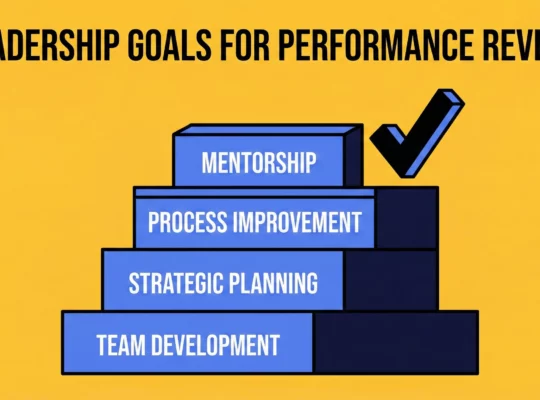In today’s fast-paced work environment, recognizing the signs an employee is looking for another job is crucial for maintaining a healthy and productive workplace. When an employee starts exploring new job opportunities, it can have a significant impact on the team’s morale and the overall performance of the company. Failing to identify these signs early can lead to unexpected employee turnover, which can be costly and disruptive. At Review.jobs, we believe that proactive management and early intervention are key to retaining top talent and ensuring long-term organizational success.
Table of content
- Behavioral Changes
- Work Performance Indicators
- Social and Professional Signals
- Psychological and Emotional Signs
- Practical Implications for Management
- Summary of key points
Behavioral Changes
Increased Absences
One of the most noticeable signs an employee is looking for another job is a sudden increase in absences. If an employee who typically has good attendance starts taking random days off, it might indicate they are attending job interviews. While everyone needs time off occasionally, a pattern of unexplained absences is a red flag for HR professionals and team leaders. For instance, an employee who previously had a perfect attendance record might suddenly start taking multiple half-days or calling in sick more frequently without a clear reason.
Change in Attire
A change in attire can also be a subtle yet telling sign. Employees who suddenly start dressing more formally than usual might be preparing for job interviews. For example, if a normally casual dresser begins wearing suits or more polished outfits, it could be a sign they are heading to interviews before or after work. While it’s important to avoid jumping to conclusions based solely on appearance, this change, coupled with other signs, can indicate that an employee is job hunting.
Withdrawal from Activities
Another clear sign is a withdrawal from team-related activities and social events. Employees who are disengaged and less enthusiastic about participating in workplace activities might be mentally preparing to leave. This withdrawal often manifests in reduced interaction with colleagues and a lack of interest in team-building exercises. For instance, an employee who used to organize team lunches or participate actively in after-work events might start declining invitations and keeping to themselves more.
Work Performance Indicators
Decreased Productivity
A significant drop in productivity is a major indicator that an employee might be looking for another job. When employees become disengaged, their work quality and output often decline. They might miss deadlines, produce subpar work, or show a general lack of enthusiasm for their tasks. Decreased productivity indicators include slower response times to emails, frequent mistakes in their work, and a noticeable decline in their usual work pace.
Late Arrivals and Early Departures
Changes in timekeeping, such as frequent late arrivals and early departures, are also signs an employee is looking for another job. Employees who are mentally checking out may no longer feel the need to adhere to their usual work schedule, instead using this time for job search activities. For example, an employee who used to arrive early and stay late might start showing up right at the start time and leaving as soon as the clock hits five.
Lack of Initiative
A reduction in initiative is another red flag. Employees who stop volunteering for new tasks, contributing ideas, or showing interest in long-term projects may be considering a career transition. This lack of initiative can be detrimental to team dynamics and overall productivity. For instance, a team member who previously took charge of projects might become passive, waiting to be assigned tasks rather than proactively seeking them out.
Social and Professional Signals
Social Media Updates
Increased activity on professional networks like LinkedIn can be a strong sign that an employee is looking for another job. Updating profiles, making new connections, and engaging in professional networking are common job search behaviors. For example, if an employee suddenly updates their profile picture, adds new skills, or starts connecting with recruiters, it could be a sign they are actively seeking new opportunities.
Professional Discontent
Expressions of professional dissatisfaction, whether during meetings or casual conversations, can signal that an employee is considering leaving. Disconnectedness and open complaints about career advancement issues, workload, or management are signs of underlying discontent. For instance, an employee who frequently voices frustrations about the lack of promotion opportunities or the company’s direction might be contemplating a move.
Request for References and Documentation
When employees start requesting references or updated job descriptions, it often means they are preparing for interviews. This behavior is a clear sign that they are actively looking for new opportunities and may soon be transitioning out of the company. For example, an employee asking their manager for a letter of recommendation or an updated job description to reflect their current role accurately is likely polishing their resume for job applications.
Psychological and Emotional Signs
Cultural Disengagement
Employees who become disinterested in company culture or future planning discussions are often considering leaving. This cultural disengagement can be a sign that they no longer see themselves as part of the company’s long-term plans. For instance, an employee who used to participate in company town halls or strategy meetings might start skipping these events or showing little interest in their outcomes.
Visible Stress or Discontent
Visible stress or signs of discontent, such as frequent irritability or withdrawal, can indicate that an employee is looking for another job. These emotional indicators are often overlooked but can be telling signs of job search activities. For example, an employee who used to be cheerful and engaged might become withdrawn, showing signs of frustration or dissatisfaction more frequently.
Shifts in Workplace Relationships
Changes in how employees interact with colleagues and management can also signal that they are considering leaving. They may become more distant, less collaborative, or show a reduced effort to maintain workplace relationships. For instance, an employee who used to engage in friendly banter with team members might become more reserved and avoid social interactions.
Practical Implications for Management
Retention Strategies
Addressing the underlying issues causing employees to look for new jobs is crucial for retention. Implementing effective employee retention strategies, such as offering career development opportunities and recognizing employee achievements, can help reduce turnover. For example, providing clear paths for advancement and regular performance reviews can help employees feel valued and engaged.
Engagement Techniques
Re-engaging employees who might be considering a departure is essential. Techniques such as regular check-ins, providing meaningful feedback, and creating a positive work environment can help re-establish their commitment to the company. Engagement techniques might include setting up mentorship programs, offering flexible work arrangements, and ensuring employees have the resources they need to succeed.
Open Communication
Maintaining open lines of communication and feedback is vital. Encouraging employees to voice their concerns and aspirations can help management address issues before they lead to job search activities. Open communication fosters a supportive work environment and helps identify signs an employee is looking for another job early on. For example, regular one-on-one meetings where employees can discuss their goals and challenges can prevent misunderstandings and disengagement.
Summary of key points
Recognizing the signs an employee is looking for another job is critical for HR professionals and team leaders. By being attentive to behavioral changes, work performance indicators, social and professional signals, and psychological signs, management can take proactive steps to retain valuable employees. Implementing effective engagement and retention strategies can prevent unnecessary turnover and ensure a stable and motivated workforce. At Review.jobs, we emphasize the importance of early detection and proactive management to maintain a healthy and productive work environment.
Summary of Behavioral Changes and Indicators
| Behavioral Changes | Examples |
| Increased Absences | Sudden and random days off, frequent sick leaves |
| Change in Attire | More formal dressing, noticeable shift in appearance |
| Withdrawal from Activities | Reduced participation in team meetings, social events |
| Decreased Productivity | Missing deadlines, subpar work quality, slower response times |
| Late Arrivals/Early Departures | Frequent tardiness, leaving right on time or early |
| Lack of Initiative | Not volunteering for tasks, disinterest in long-term projects |
| Social Media Updates | Active LinkedIn updates, new connections, profile enhancements |
| Professional Discontent | Complaints about career progression, workload, management |
| Request for References | Asking for letters of recommendation, updated job descriptions |
| Cultural Disengagement | Disinterest in company culture, skipping planning meetings |
| Visible Stress/Discontent | Irritability, withdrawal, signs of frustration |
| Shifts in Relationships | Becoming distant, less collaborative, avoiding social interactions |
Key Actions for Management:
- Retention Strategies: Provide career development opportunities, recognize achievements.
- Engagement Techniques: Regular check-ins, meaningful feedback, positive work environment.
- Open Communication: Encourage employees to voice concerns and aspirations.





